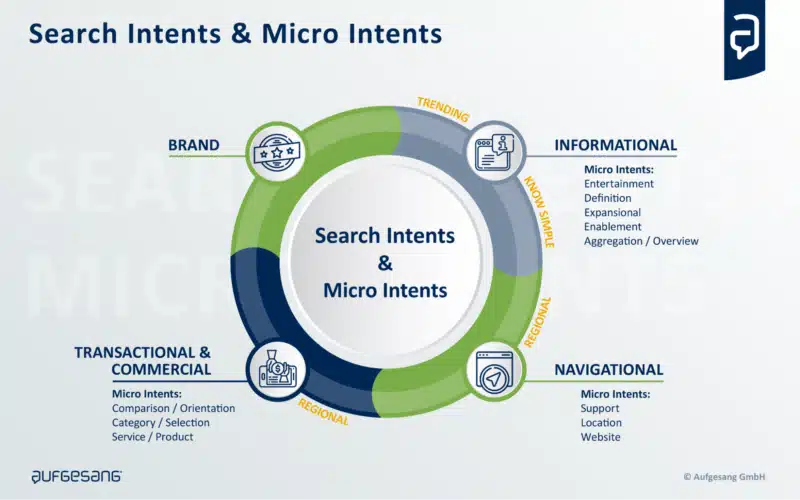News Blast
Your daily source for breaking news and insightful articles.
Search Intent Decoded: What Your Queries Really Mean
Unlock the secret behind your search queries and discover what they truly mean for smarter online experiences!
Understanding the Different Types of Search Intent: A Comprehensive Guide
When it comes to search engine optimization (SEO), understanding the different types of search intent is crucial for creating content that resonates with your audience. Generally, search intent can be classified into four main categories: informational, navigational, transactional, and commercial investigation. Informational intent occurs when users seek to learn something, such as 'How to optimize my website for SEO?' Navigational intent happens when users are looking for a specific website or page, often evident in queries like 'Facebook login.' Transactional intent indicates that the user is ready to make a purchase, as seen in searches like 'buy running shoes online,' while commercial investigation is when users are researching products before making a decision, for example, 'best laptop for gaming.'
To effectively cater to these types of search intent, it's essential to tailor your content strategy accordingly. For instance, if you're targeting informational intent, focus on providing detailed guides, how-to articles, or in-depth blog posts that answer common questions. Conversely, for transactional intent, ensure your website has optimized product pages, clear calls-to-action, and persuasive content that encourages users to complete their purchases. By understanding and addressing the various forms of search intent, you can significantly improve your SEO efforts and drive more relevant traffic to your website.

How to Decode User Queries for Better SEO Performance
Understanding user queries is an essential part of improving your SEO performance. By analyzing the language and phrases users employ when searching, you can tailor your content to meet their needs more effectively. Start by utilizing tools like Google Search Console or keyword research platforms to gather data on the most common search terms related to your niche. Pay attention to long-tail keywords, as these often reveal the specific intent behind a search, helping you to create content that answers users' questions directly.
Once you've gathered your data, consider grouping similar queries into categories. This can help you identify patterns and trends in user behavior. For example, you might find that queries fall into three main categories: informational, navigational, and transactional.
- Informational: Users looking for answers or insights.
- Navigational: Users trying to find specific websites or pages.
- Transactional: Users ready to make a purchase or complete an action.
What Your Search Queries Reveal About User Intent: Insights and Strategies
Understanding user intent behind search queries is crucial for crafting content that resonates with your audience. User intent typically falls into three main categories: informational, navigational, and transactional. For instance, when a user types in a question like "How to bake a chocolate cake?", they are signaling an informational intent, seeking guidance or knowledge. Conversely, if someone searches for "buy chocolate cake online", it reflects a transactional intention, indicating readiness to make a purchase. By analyzing the type of queries that lead users to your content, you can fine-tune your SEO strategies to better meet their needs.
Effective strategies for catering to user intent involve optimizing your content to align with these search queries. Begin by conducting thorough keyword research to identify relevant terms associated with different user intents. Utilize tools that analyze search trends and user behavior to gain insights. Once you have this data, consider implementing on-page SEO techniques such as crafting compelling titles, meta descriptions, and headers that clearly reflect user intent. Additionally, regularly updating your content to maintain relevance and incorporating internal links to related topics can significantly enhance user engagement and satisfaction.